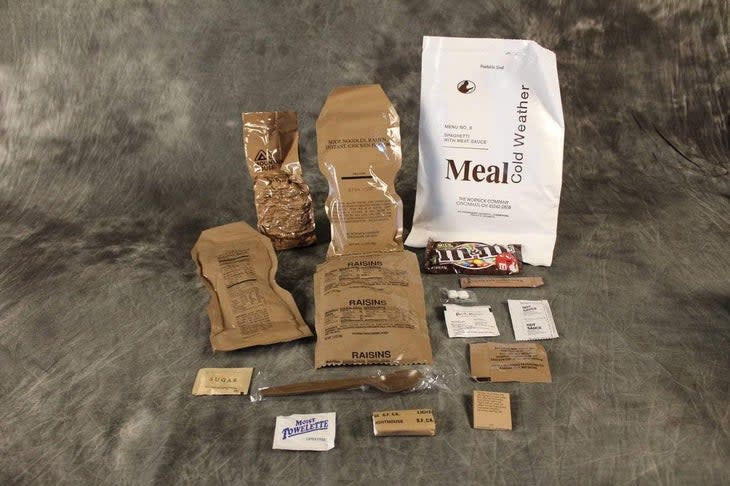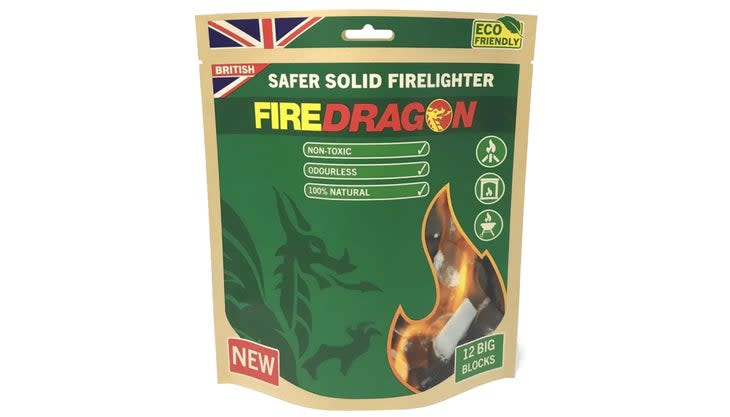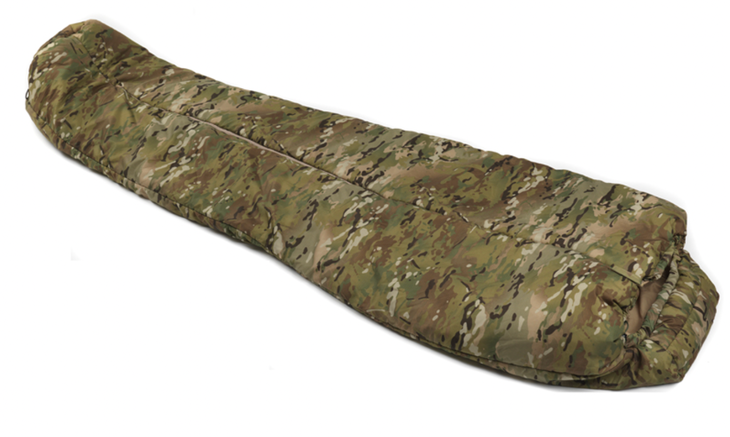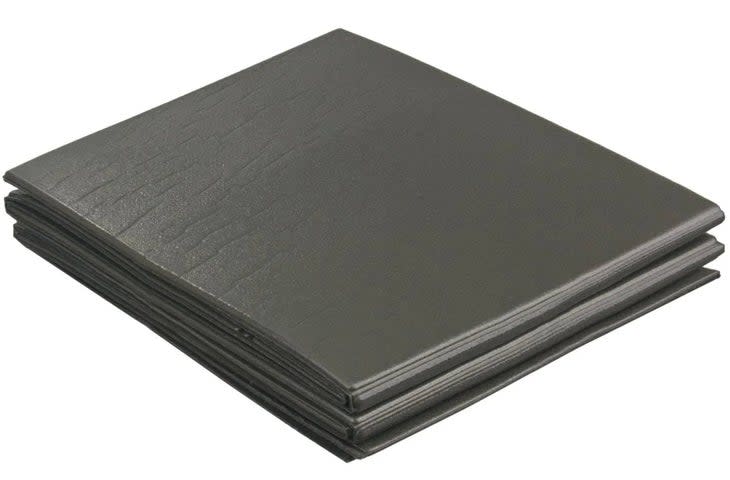5 Pieces of Military Surplus Gear Lightweight Backpackers Can Appreciate
This article originally appeared on Backpacker
Many of my first nights spent outdoors without my parents were courtesy of the UK's Combined Cadet Force, the British equivalent of JROTC. On long weekends hiking up and down the mountains of Snowdonia, I found a love for covering ground on foot, with everything I needed on my back. Unfortunately for the British Armed Forces, I also discovered a loathing for being told what to do and cutting my hair. So, like a good footsoldier, I decided to improvise, adapt, and overcome: I "borrowed" some equipment, found my own routes, and struck out across the UK in search of a backcountry experience that did not involve staying up at night watching out for imaginary bad guys or marching in circles for hours.
I filled the gaps in my purloined setup with purchases from a local army surplus store--this was at a time when Amazon only sold books and the gear available in retail shops was both neon and expensive. While most of the gear was serviceable, it tended to be heavy and often more than a little outdated.
Twenty years later, I have spent more money on Dyneema and down bags than I would like to admit, but the army surplus store bargain still holds a special place in my heart. As a conflict journalist, I often find myself working in war zones and other places where the durability and color palette of military gear makes it a sensible choice. Luckily, military backpacking gear has gotten a lot better--and a lot lighter--since my ill-fated cadet days, as even companies like Patagonia and Granite Gear have jumped into the business of supplying special forces units. Here's a list of some of the camping gear that you might want to pick up now that the government no longer has a use for it.

Cold Weather MREs
Regular MREs--that's Meal, Ready to Eat, for those of you who don't speak Department of Defense, or Meals Rejected by Everyone for generations of soldiers who had to suffer through them--are extremely heavy. They also historically tasted so bad that the US government had to rapidly design a new ration during the wars in Afghanistan and Iraq because troops kept throwing much of their food away. On the other hand, some of the more lightweight Arctic variants can compete with freeze-dried backpacking meals in terms of calories per ounce. Government nutritionists carefully plan the contents of Cold Weather MREs to provide troops in the field with a well-balanced diet.
Unlike regular, pre-hydrated MREs, Arctic MREs tend to be designed with weight in mind. They provide enough food for a meal, hot beverages, and several snacks and also come packaged with everything you'll need to eat them, including a spoon, salt and pepper, matches, gum, and pouches which can be used as containers, meaning you don't need to bring along extra cups or bowls. I've tried a couple of cold weather menus and was surprised to find hazelnut hot chocolate and decent dehydrated eggs alongside classics such as the Pop-Tart and single serving peanut butter.
I tried the Norwegian Arctic Rations in addition to the US MRE, Cold Weather. These come in at 110 calories per ounce (more if you discard the outer package) and include a main meal, energy drink, something called "fruit soup," a dark chocolate bar, dried fruit, coffee, gum, jerky, an electrolyte drink, a biodegradable spoon, and a zip-top bag for your trash. (Interestingly, European MREs are often more environmentally friendly than American ones, thanks to government regulations limiting the amount of single-use, non-biodegradable packaging they can contain.) The food was surprisingly tasty, and a pleasant change from anything I've had before in the freeze-dried or dehydrated food realm. Once you crack open the lid of foreign MREs, the world is your oyster: Soon you'll be enjoying Latvian Roasted lentils or the UK's pindi chana aloo on your next overnighter.

Fire Dragon Tablets
One of my enduring memories of those early camping trips is being told not to watch my "hexy telly", which for you non-Brits refers to the state of stupor in which one stares, blank eyed, at a solid-fuel hexamine stove. These days, the foul-smelling waxy hexamine block is a thing of the past, replaced by the excellent bioethanol Fire Dragon fuel tablets. At 27 grams a piece and available in various packages--like this French stove which includes a bag and tablet for purifying water--these make a real case for themselves as an ultralight cooking method.
Often, I am tempted to go on "stoveless" overnight or weekend trips, but I can’t quite shake my need for a cup of hot coffee on a cold morning. With a couple of Fire Dragon tablets, one of the surprisingly good instant coffee sachets in the Cold Weather MRE, and my stupid light MSR Titan Cup, I can save the space and weight of my stove. Even if I'm not camping overnight, these tiny gel packs (which are non-toxic and can safely be stored with food), normally find their way into my emergency kit, as they are an excellent way to start a fire. While volunteering at the US-Mexico border, I have used them to quickly make a heating fire in conditions where hypothermia was a real concern and I didn't have the time or energy to go looking for dry tinder in a rainstorm.

SnugPak SF Bivvi and SF2 bag
Next to cowboy camping, packing a bivy is the lightest way to sleep outside, but it's not always the most comfortable. The Snugpak Special Forces bivy weighs 100 grams less than the popular Outdoor Research Helium model. It's plenty big enough for my 6'3" frame and even with a 20-degree bag I have room to move around. The bivy's military heritage shows in the extended toe box, which is designed for sleeping with boots on, and the center zip for quick egress. As a side-sleeper, I appreciated not having a zip digging into my side. Its scant 340-gram weight make the SF bivy an excellent choice for an emergency shelter.
The SF Bivvi is designed to work with the SF2 sleeping bag. As with many military surplus products, Snugpak's line is designed as a system where bags can be combined to add warmth:. This makes choosing what to bring very simple: pack your bivy and the appropriate bag or bags for the temperature. The SF2, like most military sleeping bags, is filled with synthetic insulation, which comes with a slight weight penalty but increases both durability and performance in damp conditions.The bag has a comfort rating of 19 degrees Fahrenheit and a low rating of 10, but can zip together with the SF1 bag to drop that to 5 and -4 degrees respectively. At 3 lb. 14 oz., the bag isn't ultralight (my Thermarest Hyperion 20 weighs a mere 1 lb. 4 oz), but but it's become my grab and go bag for fall overnights or work trips to cold places that might involve unscheduled camping. This bag would make a great choice for a search and rescue team member, or anyone else looking for a durable bag they don't have to baby.

Bundeswehr Sleeping Pad
Using a sleeping pad as the frame for a pack won't be a new concept to many ultralighters, but the German army doing so was news to me. I’m a fan of the Gossamer Gear Thinlite folding sleeping pad, and often take it on work trips to protect against punctures in my inflatable pad. At 500 grams, the Bundeswehr pad is a good deal heavier than the Thinlite, and even slightly heavier than a Thermarest Z-Lite, but it is thick enough to use comfortably on its own and sturdy enough to support a well-loaded frameless pack. Prices seem to have spiked recently with the current conflict in Ukraine, but these have gone on Ebay for as little as 15 euros, and even with international shipping they can be a great bargain.

MRE Spoon
The Humble US MRE spoon weighs just 6 grams grams less than Snow Peak’s titanium spork. Unlike other plastic utensils, it's also surprisingly robust: The one I have now has lasted me since the beginning of summer, and has survived being shoved into backpacks and stirring hot foods. If you're a real nerd, you can trim down the handle such that the spoon fits inside your cold soaking jar, which brings the utensil down to a scant 5 grams. These spoons can be purchased on their own, but they're also included in every US MRE.
For exclusive access to all of our fitness, gear, adventure, and travel stories, plus discounts on trips, events, and gear, sign up for Outside+ today.

